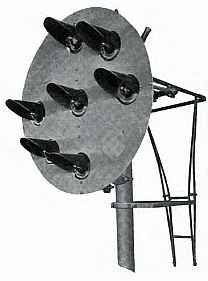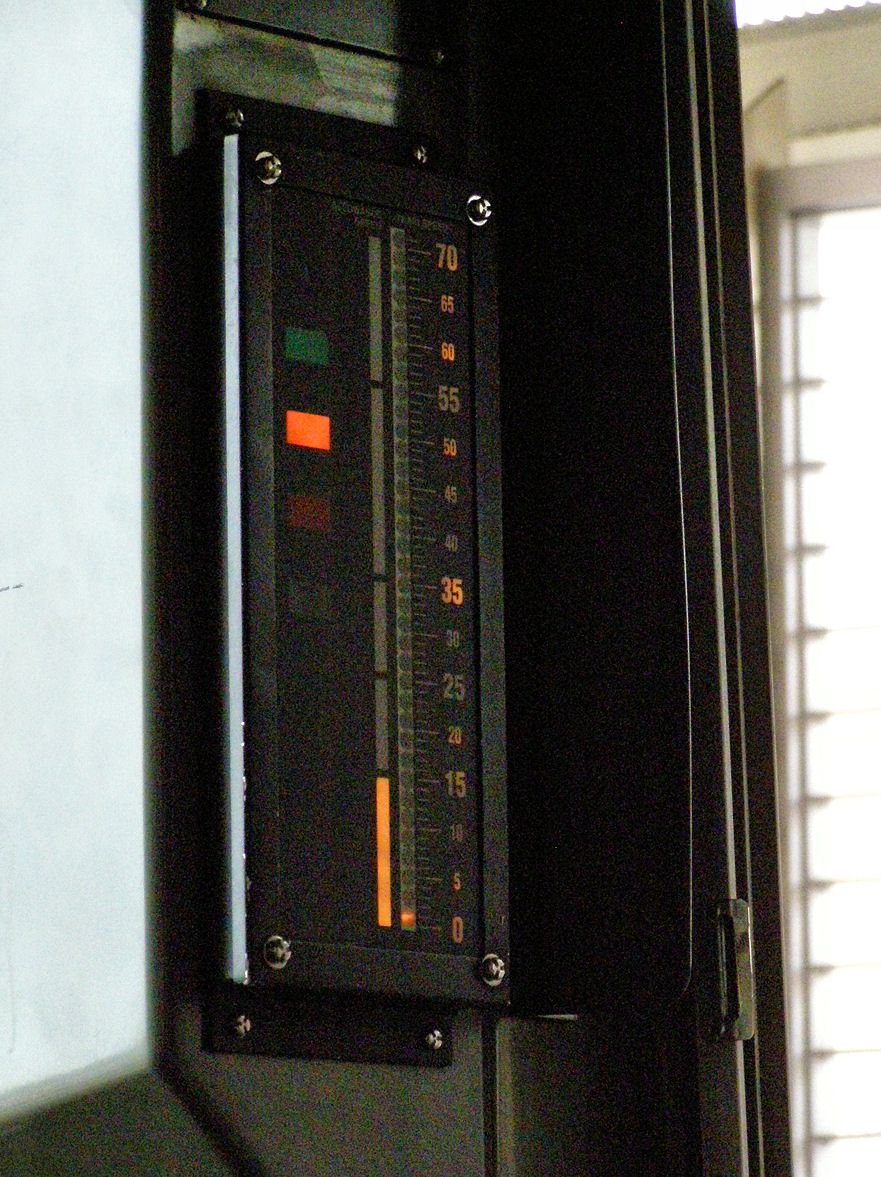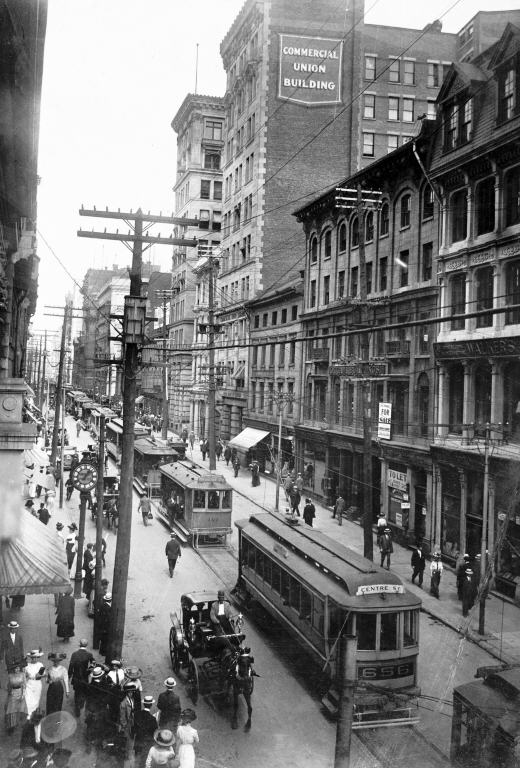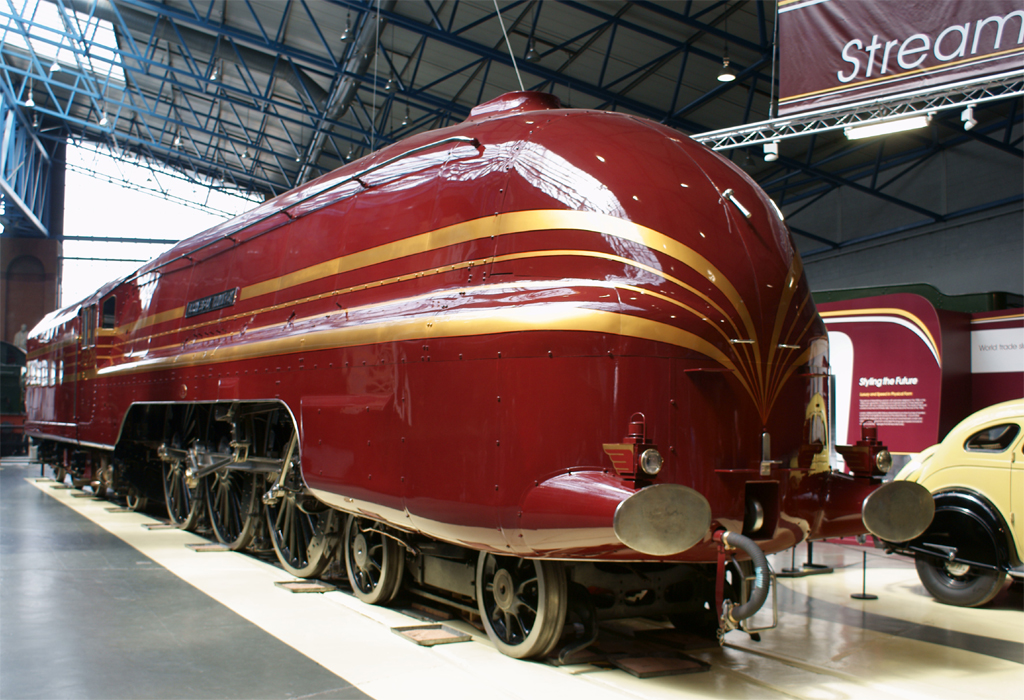|
Montreal Expo Express
The Expo Express was a rapid transit system consisting of five stations and a route, running from Cité du Havre to La Ronde (amusement park), La Ronde in Montreal, Montreal, Quebec, Canada. Built for the 1967 World's Fair (Expo 67) at a cost of around Canadian dollar, CAD$18 million, the trains carried 1,000 passengers each and ran approximately every five minutes. In 1968 the cars were sold to the Montreal#Government, City of Montreal for $1.8 million and operated by the Montreal Transit Commission (now the Société de transport de Montréal, STM). The train remained in limited service for Expo 67#Man and His World (1968–1984), Man and His World for five additional years, however, on a shortened route from 1969-onwards when tracks were cut back to Saint Helen's Island. Service was withdrawn in 1972. Vehicles Not to be confused with the Minirail monorail which ran within the perimeters of the Expo Site, the Expo Express used standard railway technology, with two running r ... [...More Info...] [...Related Items...] OR: [Wikipedia] [Google] [Baidu] |
Expo 2000
Expo 2000 was a World Expo held in Hanover, Germany from 1 June to 31 October 2000. It was located on the Hanover Fairground (Messegelände Hannover), which is the largest exhibition ground in the world. Initially some 40 million people were expected to attend the exhibition over the course of months; however, eventually with less than half of this number, the Expo was a flop and turned out to be a financial failure. The Expo's masterplan was designed in a joint venture with Studio d'Arnaboldi / Cavadini, Locarno and AS&P (Albert Speer und Partner GmbH). History Background On 14 June 1990, the international organization sanctioning World Expos Bureau International des Expositions awarded Expo 2000 to Hanover, beating out Toronto by a 21 to 20 vote. In 1992, the architects Studio Arnaboldi/Cavadini of Locarno won an international design competition for the masterplan of the exhibition grounds. On 12 June that year, a survey conducted by the city council was made public showing o ... [...More Info...] [...Related Items...] OR: [Wikipedia] [Google] [Baidu] |
Saint Helen's Island
Saint Helen's Island (french: Île Sainte-Hélène) is an island in the Saint Lawrence River, in the territory of the city of Montreal, Quebec, Canada. It forms part of the Hochelaga Archipelago. It is situated immediately offshore from Old Montreal on the southeastern side of the Island of Montreal in southwestern Quebec, and is part of the central borough of Ville-Marie. The Le Moyne Channel separates it from Notre Dame Island. Saint Helen's Island and Notre Dame Island together make up Jean-Drapeau Park (formerly Parc des Îles). It was named in 1611 by Samuel de Champlain in honour of his wife, Hélène de Champlain, née Boullé. The island belonged to the Le Moyne family of Longueuil from 1665 until 1818, when it was purchased by the British government. A fort ( Saint Helen Island Fort), powderhouse and blockhouse were built on the island as defences for the city, in consequence of the War of 1812. History In 1838 plans were in place by the British Ordnance Department ... [...More Info...] [...Related Items...] OR: [Wikipedia] [Google] [Baidu] |
Model Board At Expo Express Control Center
A model is an informative representation of an object, person or system. The term originally denoted the plans of a building in late 16th-century English, and derived via French and Italian ultimately from Latin ''modulus'', a measure. Models can be divided into physical models (e.g. a model plane) and abstract models (e.g. mathematical expressions describing behavioural patterns). Abstract or conceptual models are central to philosophy of science, as almost every scientific theory effectively embeds some kind of model of the physical or human sphere. In commerce, "model" can refer to a specific design of a product as displayed in a catalogue or show room (e.g. Ford Model T), and by extension to the sold product itself. Types of models include: Physical model A physical model (most commonly referred to simply as a model but in this context distinguished from a conceptual model) is a smaller or larger physical copy of an object. The object being modelled may be small ... [...More Info...] [...Related Items...] OR: [Wikipedia] [Google] [Baidu] |
Westinghouse Air Brake Company
The Westinghouse Air Brake Company (sometimes nicknamed or abbreviated WABCO although this was also confusingly used for spinoffs) was founded on September 28, 1869 by George Westinghouse in Pittsburgh, Pennsylvania. Earlier in the year he had invented the railway air brake in New York state. After having manufactured equipment in Pittsburgh for a number of years, he began to construct facilities and plants east of the city where homes for his employees were built. In 1889, the air brake manufacturing facility was moved to Wilmerding, Pennsylvania, and the company's general office building was built there in 1890. In 1921 the company began manufacturing a modified air brake system for installation in trucks and heavy vehicles. In 1953 WABCO entered the heavy equipment marketplace, buying the assets of leading equipment designer R.G LeTourneau. An entity known as LeTourneau-Westinghouse sold a range of innovative products, including scrapers, cranes and bulldozers until 196 ... [...More Info...] [...Related Items...] OR: [Wikipedia] [Google] [Baidu] |
Union Switch & Signal
Union Switch & Signal (commonly referred to as US&S) was an American company based in Pittsburgh, Pennsylvania, which focused on railway signaling equipment, systems and services. The company was acquired by Ansaldo STS (from 2015, Hitachi Rail STS) in 1988, operating as a wholly-owned company until January 2009, when US&S was renamed "Ansaldo STS USA" to operate as a subsidiary of Ansaldo in the Americas and Asia.Ansaldo STS USA on Ansaldo website (archived, March 8, 2009) History Early years founded Union Switch & Signal Inc. in 1881, consolidating the ...[...More Info...] [...Related Items...] OR: [Wikipedia] [Google] [Baidu] |
Cab Signalling
Cab signaling is a railway safety system that communicates track status and condition information to the cab, crew compartment or driver's compartment of a locomotive, railcar or multiple unit. The information is continually updated giving an easy to read display to the train driver or engine driver. The simplest systems display the trackside signal, while more sophisticated systems also display allowable speed, location of nearby trains, and dynamic information about the track ahead. Cab signals can also be part of a more comprehensive train protection system that can automatically apply the brakes stopping the train if the operator does not respond appropriately to a dangerous condition. Overview The main purpose of a signal system is to enforce a safe separation between trains and to stop or slow trains in advance of a restrictive situation. The cab signal system is an improvement over the wayside signal system, where visual signals beside or above the right-of-way gov ... [...More Info...] [...Related Items...] OR: [Wikipedia] [Google] [Baidu] |
Montreal Metro
The Montreal Metro (french: Métro de Montréal) is a rubber-tired underground rapid transit system serving Greater Montreal, Quebec, Canada. The metro, operated by the Société de transport de Montréal (STM), was inaugurated on October 14, 1966, during the tenure of Mayor Jean Drapeau. It has expanded since its opening from 22 stations on two lines to 68 stations on four lines totalling in length, serving the north, east and centre of the Island of Montreal with connections to Longueuil, via the Yellow Line, and Laval, via the Orange Line. The Montreal Metro is Canada's second busiest rapid transit system and North America's fourth busiest rapid transit system, behind the New York City Subway, the Mexico City Metro and the Toronto subway, delivering an average of daily unlinked passenger trips per weekday as of . In , trips on the Metro were completed. According to the STM, the Metro system had transported over 7 billion passengers as of 2010. With the Metro and t ... [...More Info...] [...Related Items...] OR: [Wikipedia] [Google] [Baidu] |
Streamliner
A streamliner is a vehicle incorporating wikt:streamline, streamlining in a shape providing reduced air resistance. The term is applied to high-speed railway trainsets of the 1930s to 1950s, and to their successor "High-speed rail, bullet trains". Less commonly, the term is applied to fully Bicycle fairing, faired upright and recumbent bicycles. As part of the Streamline Moderne trend, the term was applied to passenger cars, trucks, and other types of light-, medium-, or heavy-duty vehicles, but now vehicle streamlining is so prevalent that it is not an outstanding characteristic. In Land speed record, land speed racing, it is a term applied to the long, slender, custom built, high-speed vehicles with enclosed wheels. Trains Before World War II Europe The first high-speed streamliner in Germany was the "Schienenzeppelin", an experimental propeller driven single car, built in 1930. On 21 June 1931, the car set a speed record of on a run between Berlin and Hamburg. In ... [...More Info...] [...Related Items...] OR: [Wikipedia] [Google] [Baidu] |
Toronto Transit Commission
The Toronto Transit Commission (TTC) is the public transport agency that operates bus, subway, streetcar, and paratransit services in Toronto, Ontario, Canada, some of which run into the Peel Region and York Region. It is the oldest and largest of the urban transit service providers in the Greater Toronto Area, with numerous connections to systems serving its surrounding municipalities. Established as the Toronto Transportation Commission in 1921, the TTC owns and operates Toronto subway, four rapid transit lines with List of Toronto subway stations, 75 stations, over 150 List of Toronto Transit Commission bus routes, bus routes, and 9 Toronto streetcar system, streetcar lines. In , the system had a ridership of , or about per weekday as of . The TTC is the most heavily used Public transport in Canada, urban mass transit system in Canada and the third largest in North America, after the New York City Transit Authority and Mexico City Metro. History Public transportatio ... [...More Info...] [...Related Items...] OR: [Wikipedia] [Google] [Baidu] |
Toronto Subway And RT
The Toronto subway is a rapid transit system serving Toronto and the neighbouring city of Vaughan in Ontario, Canada, operated by the Toronto Transit Commission (TTC). It is a multimodal rail network consisting of three heavy-capacity rail lines operating predominantly underground, and one elevated medium-capacity rail line. three new lines are under construction, two light rail lines and one light metro line. In 1954, the TTC opened Canada's first underground rail line, then known as the "Yonge subway", under Yonge Street between Union Station and Eglinton Avenue with 12 stations. As of 2018, the network encompasses 75 stations and of route. In , the system had a ridership of , or about per weekday as of , making it the busiest rapid transit system in Canada in terms of ridership. Overview There are four operating rapid transit lines in Toronto: * Line 1 Yonge–University is the longest and busiest rapid transit line in the system. It opened as the Yonge subway in ... [...More Info...] [...Related Items...] OR: [Wikipedia] [Google] [Baidu] |
Monorail
A monorail (from "mono", meaning "one", and "rail") is a railway in which the track consists of a single rail or a beam. Colloquially, the term "monorail" is often used to describe any form of elevated rail or people mover. More accurately, the term refers to the style of track.The term "track" is used here for simplicity. Technically the monorail sits on or is suspended from a guideway containing a singular structure. There is an additional generally accepted rule that the support for the car be narrower than the car. Etymology The term possibly comes from 1897, from German engineer Eugen Langen, who called an elevated railway system with wagons suspended the '' Eugen Langen One-railed Suspension Tramway'' (Einschieniges Hängebahnsystem Eugen Langen). Differentiation from other transport systems Monorails have found applications in airport transfer and medium capacity metros. To differentiate monorails from other transport modes, the Monorail Society defines a monorail ... [...More Info...] [...Related Items...] OR: [Wikipedia] [Google] [Baidu] |







